So, you got a puppy! Congratulations! One of the most important things you need to do as a pet parent when you first get your puppy is potty train them properly. You may think about how to successfully potty train a puppy when you work. But don’t worry; with a little patience and consistency, you can potty train your puppy even if you’re not home all day.
How to Potty Train Your Puppy at Home While You Work
Crate Training Is Key
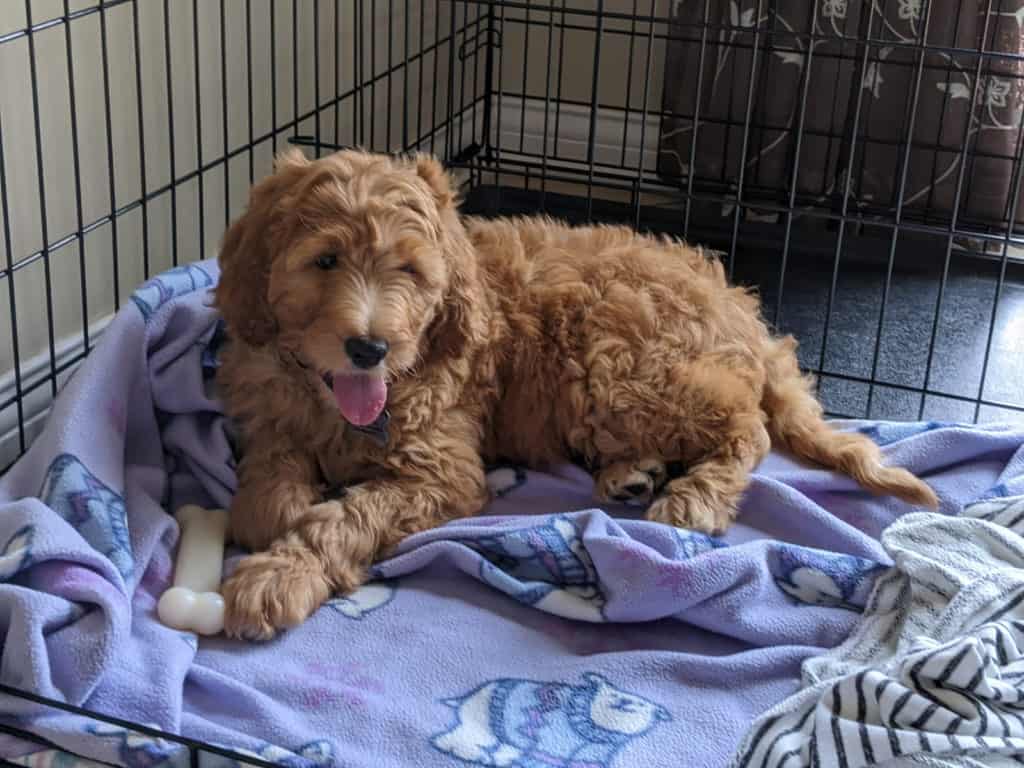
One of the most important things you can do to potty train your puppy is crate train them. Crate training is when you confine your puppy to a small space, like a crate or puppy pen method, when you cannot watch them. This may seem cruel, but it’s actually really beneficial for both you and your puppy.
Puppies don’t like to soil their sleeping area, so if they are in a crate when you’re not home, they will try to hold it until you let them out. Just make sure that the crate is big enough for them to stand up, go around, and comfortably lie down, but not so big that they can use the farthest corner as a bathroom and the other as a bedroom.
You also want to make sure that you introduce your puppy to the crate gradually. Put their food bowl in the crate and let them eat their meals there. Then put a toy or bone in there for them to chew on. Once they are comfortable entering and going out of the crate on their own, you can start closing the door for short periods of time while you are home.
Don’t let them out as soon as they whine or bark, so they don’t associate whining with getting what they want. Eventually, they will be comfortable staying in the crate for up to a couple of hours at a time, which is perfect for when you’re at work all day.
Feed Them on a Regular Schedule
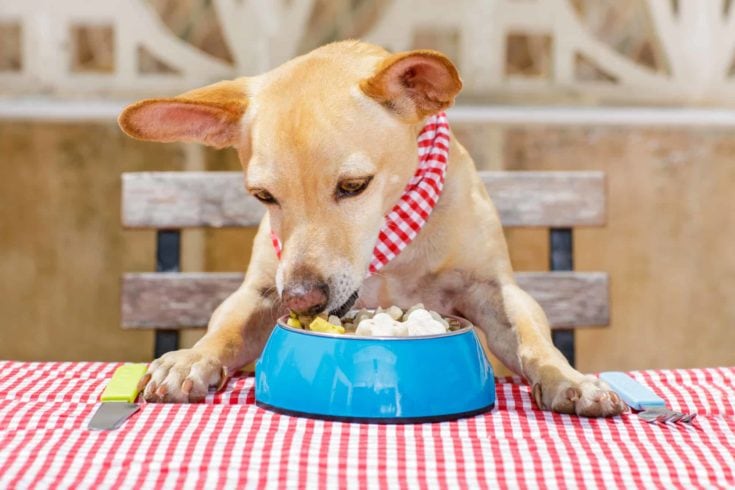
Another key part of potty training is feeding your puppy on a regular schedule. Puppies have small bladders and need to go to the bathroom frequently. If you feed them on a set schedule, they will learn when it is time to go to the bathroom and will start holding it until then. A good rule of thumb is to take them out 15-30 minutes after they eat or drink or after waking up from a nap.
Take Them Out Immediately After Eating or Drinking and After Waking Up from a Nap
As I mentioned above, puppies have small bladders and need to go frequently. So it’s important that you take them out immediately after they eat or drink or after waking up from a nap. This way, they won’t have an accident in the house because they can’t hold it in any longer.
Reward Them with Treats and Positive Reinforcement When They Go Potty in the Right Spot
Whenever your puppy goes potty in the right spot, give them lots of praise and maybe even a treat! This positive reinforcement will teach them that this is what you want them to do, and they will be more likely to do it again in the future.
Be Patient and Consistent – It May Take a Little While but Eventually, Your Puppy Will Get the Hang of It!
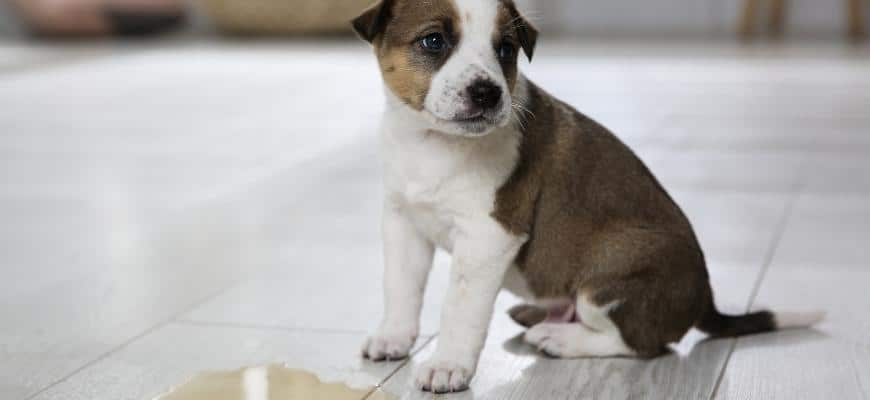
Potty training takes time and lots of patience, so don’t get discouraged if accidents happen (they definitely will). Just clean it up without making a big deal out of it, and keep doing what you’re doing. Eventually, your puppy will get the hang of it!
Steps for Potty Training a Puppy While at Work
Set Up a Potty Area
The first step in potty training your puppy is to create a designated potty spot. This can be indoors or outdoors, depending on your preference (and weather). If you’re potty training an indoor dog, we recommend using a small patch of grass or artificial turf, puppy pads, or newspaper house training.
For an outdoor dog, find an area of your yard that’s easily accessible and not too far from the door. Once you’ve selected the potty area, take your puppy there frequently so they can associate it with going to the bathroom.
Use a Crate or Exercise Pen
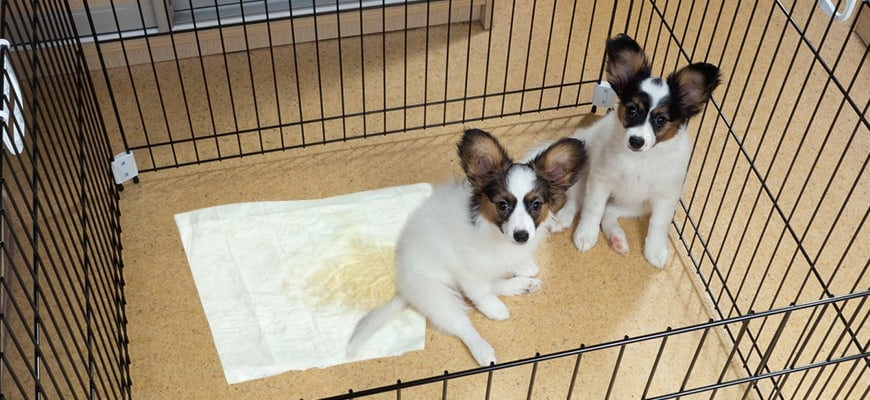
If you’re working from home full-time, chances are you can’t keep a close eye on your puppy at all times. To help prevent accidents, consider confining your puppy to a crate or exercise pen while you’re working. This will give them a safe space to stay while you’re busy and prevent them from getting into trouble. Just be sure to let them out regularly to use the bathroom and stretch their legs.
If your puppy is having accidents in the house while in a pen, consider getting a couple of puppy pads to help you train them. Just remember you’ll need to slowly inch the pads towards the door until they get the hang of it. Some of these will have a puppy pad tray to ensure the pad doesn’t slip around and is easy to clean.
Establish a Routine
Puppies thrive on routine, so one of the best things you can do is establish a regular potty schedule. Start by taking them out first thing in the morning, then every few hours throughout the day (after meals, naps, etc.). At first, you may need to set the alarm to remind yourself, but eventually, it will become second nature. And don’t forget to take them out right before bedtime and their evening meal!
If you aren’t able to be home to let your pup out with these stipulations in mind, consider hiring a dog walker, taking them to doggy daycare, or a family puppy sitter to take them out during the day.
Reward Good Behavior
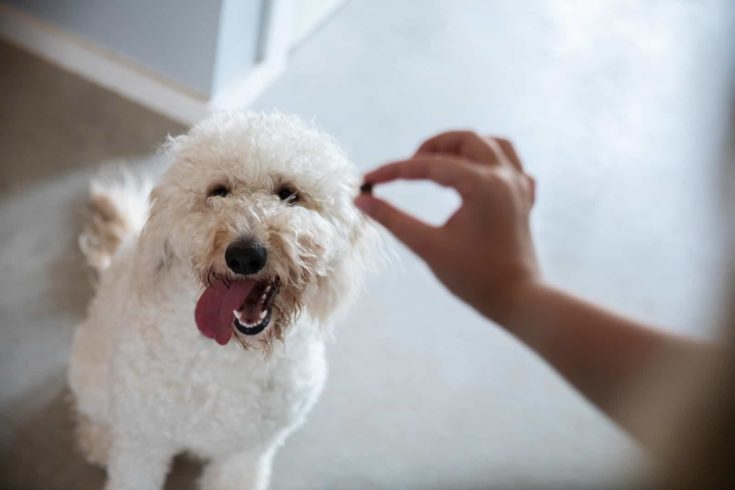
Ensure to praise your puppy enthusiastically a couple of times whenever he goes potty in his designated area. This will reinforce good behavior and help him understand that he’s doing what you want him to do. You can also use treats as rewards; just be sure not to overdo it, so he doesn’t end up with an upset stomach.
Use a Doggie Doorbell
One way to make sure your puppy knows when it’s time to go outside is to use a dog doorbell in the potty training process. Hang the doorbell next to the door that leads to the outside world, and teach your puppy how to ring it when she needs to go out.
That way, when she needs to go potty, she can just ring the bell, and you’ll know it’s time to take her out. This helps with predicting what the time frame is between midday meals, puppy breakfasts, and evening meals.
Be Consistent with Your Training
The most important thing you can do when potty training your puppy is to be consistent with your training. This means being consistent with the schedule that you’ve set for her and being consistent with the commands that you use (more on that in a minute). If you’re not consistent, your puppy will get confused, and the training will take longer. Trust me, consistency is key!
Use Positive Reinforcement
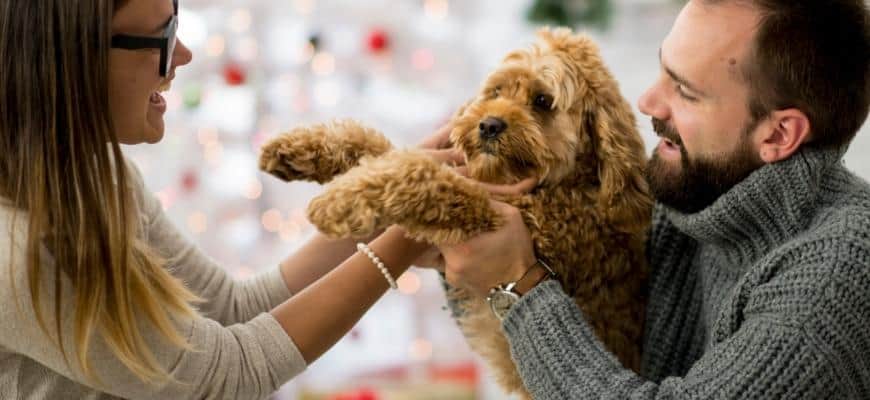
Whenever your puppy goes potty in the right place, give her lots of praise and positive reinforcement. This could be as treats, petting, or even just verbal praise. The more positive reinforcement she gets, the more likely she is to repeat the behavior in the future. And that’s what we’re aiming for here!
Frequently Asked Questions
How Much Water Should a Puppy Drink During Potty Training?
The amount of water your puppy should drink will vary depending on their age, size, and activity level. As a general rule of thumb, puppies should drink about 1 ounce of water per pound of body weight per day. For example, a 3-pound puppy would need to drink about 3 ounces of water per day. If your puppy is playing or exercising more than usual, they may need even more water than this. The best way to tell if your puppy is getting enough water is to check their gums – they should be moist but not wet.
When Should I Stop Giving Puppy Treats for Potty Training?
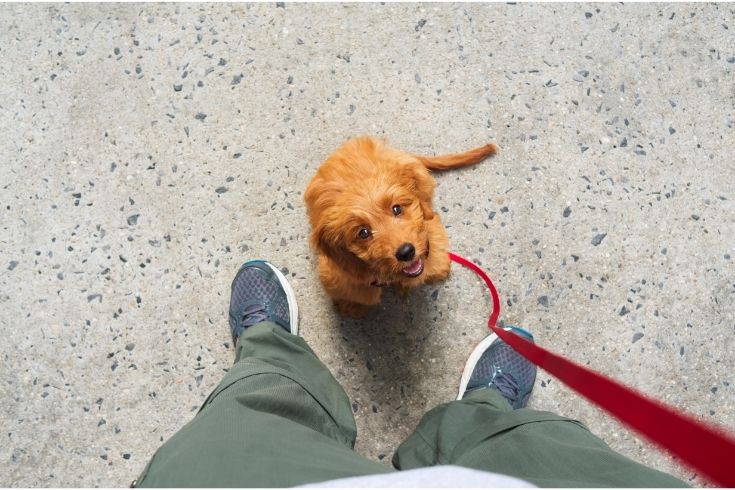
Many dog owners use treats to reward their puppies for going potty in the right place. However, once your puppy has the hang of things, cut back on the treats or stop giving them altogether. This is because you don’t want your puppy to associate going potty with getting a treat every single time – otherwise, they may start “holding it” until they get one! Instead, try offering praise or a special toy as a reward for good bathroom behavior.
How Long Does It Take to Potty Train a Puppy?
Every puppy is different and will learn at their own pace. However, most puppies can be fully potty trained within 2-4 months with a consistent effort from their owner. Remember to be patient – rushing the process will only make things harder in the long run!
What should I do with my puppy when I go to work?
If you work full-time and can’t take your puppy with you, don’t worry – there are still plenty of options for keeping them occupied while you’re gone. One option is to hire a dog walker or dog sitter to come over during the day and take them out for a potty break and some exercise. Another option is to crate-train your puppy so that they can stay in their crate while you’re gone. Whichever route you choose, just be sure to give your pup plenty of love and attention when you get home!
Should I leave water in my puppy crate while at work?
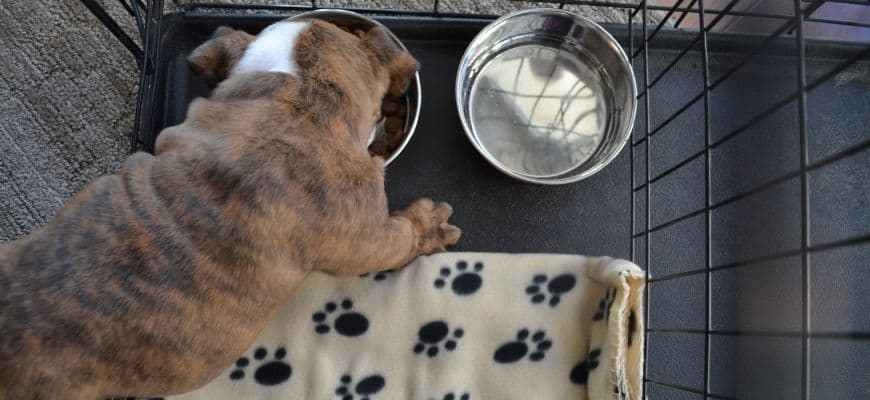
Yes! If you’re crating your puppy while you’re at work, it’s important that you leave them with access to fresh water at all times. This will help prevent dehydration and keep them healthy and hydrated throughout the day. You can either attach a water bottle to the side of their crate or invest in an automatic dog waterer that will keep their bowl full while you’re away. The only problem with this is that if you leave them too much water, they may end up soiling their crate, anyway.
Conclusion
Potty training your puppy doesn’t have to be difficult – even if you work all day! By following these simple tips, you can successfully potty train your furry friend in no time at all! Just remember to be patient and consistent and use positive reinforcement whenever possible!
I hope this guide has been helpful to you. If so, please take time to share this with other pet parents.
Thanks for reading!
